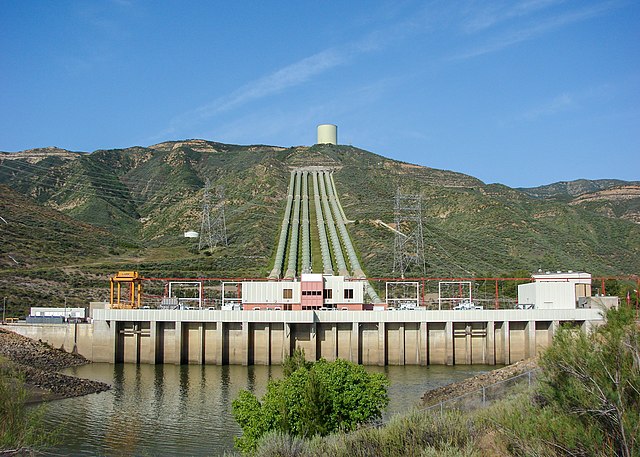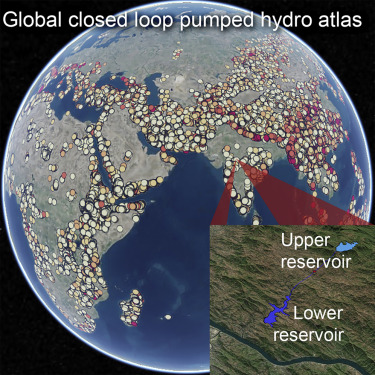
If we abandon the burning of fossil fuels and instead lean heavily into alternative energy sources such as wind and solar, then there exists a need to be able to store vast amounts of energy to keep the lights on … literally. The term is “Grid Storage”
Obviously solar only works during the day so there is also wind. But what happens in the scenario where it is not windy and it is nighttime? Also, often when there is plenty of solar, that is not when the peak demand exists, so where can you store the extra power until it is needed?
Ideally, we need to be able to smooth the curve by storing up energy when there there plenty of capacity and lower demand, and then tap into that when the demand exceeds the available supply.
Wind and solar are both very cheap and cost effective energy sources, but as their share of the energy supply grows, the need to store energy also grows, and so the cost of those grow due to that need to also store energy.
Are there cost effective solutions?
Batteries are of course a solution. I have several to store the energy I gather from solar panels on my roof, but such batteries are expensive and so scaling that up to meet the demands of an entire city would be financially challenging.
Alternative energy sources such as Nuclear is of course another option, as are geothermal and hydro solutions, but each comes with challenges. While modern nuclear is safe, it does take a rather long time to build. Geothermal only operates in very specific places. Great if you live in Iceland, but not really a solution if you need power in Ireland. Hydro-electric also runs dry, literally, if you have a drought and there are limited locations for hydro solutions.
If we bet everything on just wind and solar then we do need grid storage.
So do we have viable solutions?
Yes we do, we really do.
Let’s take this a step at a time.
Pumped hydro Grid Storage

This is a very simple idea that has been implemented successfully in many places. It is an enhancement to an existing hydro-electric setup
You basically have two reservoirs where one is higher than the other and they are connected by a river.
- When you need power, then river water will flow from the upper reservoir down through the turbines generating power into the lower reservoir and on. This is your normal hydro-electric setup.
- When you have excess power, then you can reverse the turbines and pump water from the lower reservoir back up to the upper reservoir.
This is a very efficient way to store energy when you have an excess. It is about 80% efficient.
As I mentioned previously, the number of locations where you can have something like this is obviously very limited. You need to have a location where you can have two reservoirs with a river flowing into the upper one and on down through them both.
If that setup if tricky due to a lack of viable locations then what can be done?
There is a variation of this that does not mandate two large bodies of water with a river flowing through them.This is what we can do now.
Closed Loop Pumped Hydro
For this, just one lake is all you need. No rivers required.
An example of this is the Turlough Hill Power Station in Wicklow, Ireland.
They started with just one lake and no rivers. They then built an upper lake and connected it to the lower lake via tunnels and turbines.
- When they have surplus power, they pump water from the lower lake into the upper lake
- Then when they need power, the water flows back down through the turbines generating power.
It was build in 1974 and so has been in operation for almost half a century generating 292 megawatts for up to six hours per day when there was demand for it. This is an almost instant on demand supply of power. It can go from standstill to full generation within 70 seconds.
Where Can we build these?
Now this next bit is verification that this approach is indeed viable for the support of going 100% renewables.
A analysis of the global potential for closed-loop pumped hydro found 616,000 potential sites around the world …

How much capacity is all that?
- The 616,818 low cost closed-loop, off-river pumped hydro energy storage sites have a combined storage potential of 23.1 million GWh
That’s a lot of potential and a great deal of development, so how much of this would we actually need to act as grid storage for wind and solar?
There rests the beauty of this.
You only need about 20 GWh grid storage per million people to support 100% renewable electricity. What the study reveals is that almost every region on the planet has the potential for 1,000 GWh of storage capacity per million people.
To give it all a bit more context …
- The total global storage capacity of 23 million GWh is 300 times larger than the world’s average electricity production of 0.07 million GWh per day
- You only need Pumped hydro energy storage for medium term storage (hours to weeks) to support variable wind and solar
In other words, no this is not a suggestion that we need to build 616,818 sites to support renewables. Instead we only need to have significantly less than 1% of those 616,818 sites to be developed to support 100% renewable electricity. That means we can cherry pick and go for the easy obvious sites only.
If we are smart about it all, then having large electric grids where we can share generation and grid storage resources also greatly helps to smooth out any bumps. (So yea, I’ll looking at you Texas).
They also only considered greenfield undeveloped sites. We can also greatly increase the potential for this even further by considering existing reservoirs and old mining sites.
Bottom Line
We don’t need to wait for new technologies to solve our current problems, we have solutions that we can implement now and we really can transition away from a fossil fuel based energy sources today.
As for closed-loop pumped hydro, that really can help us to rapidly get to our climate goals.
There are real reasons to be optimistic because there are real solutions that are well within our grasp.
At 80% efficiency that’s really impressive. Perhaps such systems could also be used to harness energy from tides, storm surges and waves by employing pump/valve constructions in the sea? If one could construct sea-driven pumps from concrete and unidirectional valves water could be moved uphill into dry areas like the Sahara.